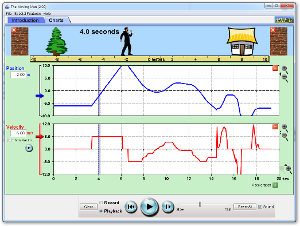 |
| photo credit: Ahmad Nawawi via photopin cc |
Our data
Class assumptions
Based on our class research, a beginning route should be 1.5 mi in length, and walked with a speed of about 3 mi/hr
Based on our class research, an intermediate route should be about 3 mi in length and jogged with a speed of about 5 mi/hr. Some steps should be included.
Based on our class research, a fast route for high aerobic value should be at least 3 mi in length and run with a speed of 7 mph. Steps will increase the challenge.
Design your basic, intermediate, and aerobic routes. Remember, all our measurements are in meters, so you must convert English measurements to metric. (15)
Create a drawing of each route, along with the number of laps Your final drawing should be understandable to people who come in from the community to walk in the morning or after school. (15)
Determine the time for one lap, based on your fitness data. Also determine the total time it will take to complete. (18) SHOW WORK.
If you are over or under in measurements by 100 laps, you may stop.
============Final Turn IN===============
Hand in all of your rough draft work.
Draw each of your maps on this school map Use colored pencils or markers to make it stand out.
Each person in the group should choose ONE route to do the following (using graph paper or a spreadsheet):
- Make a graph for ONE lap that is total distance (not displacement) for each leg of the route. The time for each leg should be based on the average speed of the route. (10)
- Make a v-t graph based on d-t data. (10)
Reflection questions: (20)
1. How likely is it that you can walk or jog at a constant speed for the route you mapped? Explain your reasoning.
2. Why did we map distance and not displacement on our graphs?
3. How would the graphs change if we used velocity instead of average speed for our calculations?
4. Create a dot diagram of the motion every 5 seconds until you get to one lap.
5. How should we publicize this or make it available to our school and/or community to promote fitness activity? Be specific on how you would do this.

